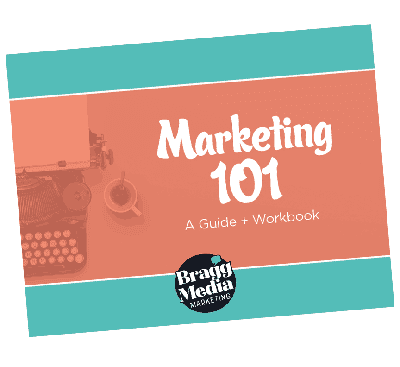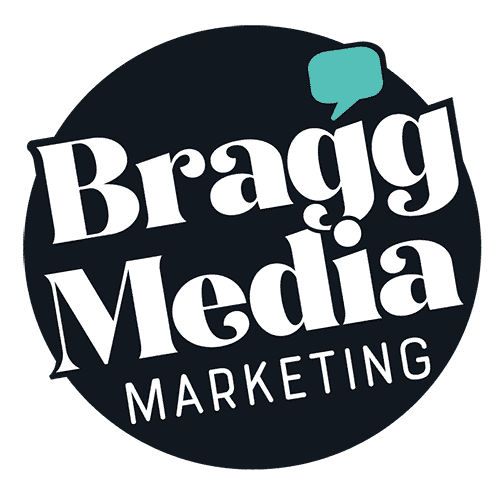
That’s not to say that digital marketing never changes, and when it does change, these changes have a ripple effect across multiple platforms, outlets, websites, methods, etc. Significant and noteworthy marketing methods typically change as buyer behavior or society changes.
Here are seven so-called marketing trends that you should either stop using or alter the way you use:

1. Too many LinkedIn groups over-saturate the conversation.
LinkedIn groups were designed to become a forum where professionals can engage in meaningful conversations about a particular niche, cause or topic. Marketing professionals agree that the most effective way to leverage LinkedIn groups is to promote a blog or page on your website that will generate leads for your products or services.
While this tactic works to some degree, LinkedIn has become so saturated with groups that users are starting to see newer LinkedIn groups as yet another platform for a sales pitch. LinkedIn tried to enhance the group experience with notifications on topics, threaded comments, replies to comments and @ mentions and users have the ability to fully edit their posts, replies and comments.
However, does it make sense for your marketing budget to create a LinkedIn group or to spend your precious time investing in groups? Unless you’re a big brand with active company influencers, creating your own LinkedIn group is a waste of time. Instead, join existing groups, keep an eye on discussions for trends and engage with worthwhile conversations once in awhile.
Free Interactive Workbook

No one wants to spend time or money on marketing efforts that don’t work! This marketing workbook and guide will help you develop a strategy that brings results!
Get social with us!
Like what you’re reading?
Subscribe to Bragg Media’s
monthly newsletter.
2. Excessive guest blogging can be hurtful, not helpful.
Guest blogging has been one of the most recommended strategies to boost your search engine optimization (SEO) for several years now. The idea is to cross-link with other websites to boost your search engine rankings.
However, Google caught wind of websites abusing this strategy for building links. It’s unclear whether or not Google will penalize websites for excessive guest blogging. However, Google officials have said that websites with high-quality, earned links will be rewarded.
Don’t use the old school SEO strategy of guest blogging. Instead, put emphasis on high quality content and focus on guest blogging on industry-related blogs and authoritative websites. Google changes its algorithms according to user behavior — which favors well-researched, high-quality content that provides valuable information. Unless guest blogging adds to the overall conversation related to your industry, then why bother?
 Website Design
Website Design
Affordable website design with a process that works for you.
3. Just stop with the cold outreaches on social media.
An article from the American Marketing Association informally polled marketing professionals to find out which marketing tactics to stop using. Cold out reaches on social media tops the list. These particular marketers cited LinkedIn Inmails in particular as a major source of annoyance.
Job seekers flock to social media as a direct line to the business for whom they would like to work. This cold outreach effort has inundated the social media landscape resulting in the messages being ignored or deleted.
According to the AMA article: “The response rates are probably abysmal, but because these messages can be automated and take little effort to send, the offenders may just keep sending them—even if it annoys the rest of us.”
The Internet has a reputation for not exactly being a safe place, because of this, private outreach messages on social media aren’t the trust builder that you need to make a good first impression. The better approach is to form a relationship by engaging with the users on social media. This helps add value to your audience by sharing an article or reposting other users’ posts.
If you want to use cold outreach, you will have better results calling the business or writing them an email. It’s more personal than trying to reach them directly on social media.
4. The jig is up — your audience can see through influencers.
Celebrity endorsements have always held a powerful influence over consumers.
Or at least they used to.
The Fyre Festival so-called luxury music festival started a new conversation about the use of influencer marketing. Fyre organizers used celebrity supermodels to hype the event on Instagram to their millions of active users. When the event turned out to be the biggest scam in history, defrauding ticket holders and investors of millions of dollars, there was new conversation about influencer marketing — that it’s not to be trusted.
Influencers are catching on as well. They are picky about which brands or causes to promote because it’s their reputation on the line. Major influencers are so inundated with offers from businesses and brands that they don’t know which ones to trust.
Today’s audience craves organic, authentic communication. They don’t want to be lied to. They don’t want to feel manipulated or sold to.
Influencer marketing has its place in today’s marketing, but if it stops an organic conversation about your business, then it’s doing more harm than good. Start by studying the influencers’ audience to see if the influencer would make for a good fit for your business. Don’t rely on influencer marketing for revenue. Many influencers lose followers over time and you will want to make sure that you have other revenue channels in place.

5. Chatbots can hurt customer service.
The popularity of chatbots began to take off when Facebook added them to their platform. Chatbots can save time and cut costs by answering users frequently asked questions with automated responses. However, the more automated chatbots became, the more the brands lost their personal connection.
Customers are turned off by the programmed scripts — chalking it up to yet another brand not wanting to communicate with customers. Chatbot-dependent brands lost support quality because these bots weren’t able to resolve complex customer issues.
Additionally, website chatbots in the bottom right hand corner of websites are seen as intrusive or disruptive because they cover up content and disrupt attention.
Chatbots can work if they are used sparingly and strategically so that they add value to your followers rather than constantly trying to sell something to them.
6. Pop-up ads show your audience the exit.
Pop-up ads used to be an effective way to grab a website user’s attention. Smaller brands don’t use pop-ups as much because they can’t afford to lose their audience once they’re on their websites. Big brands use them all the time (we’re looking at you, Forbes) as advertisements, as product announcements or as email captures. Whatever the end goal, the over use of pop-ups are effective at one thing: showing your audience the way off your site.
While major websites field customer complaints about pop-ups causing a disruption to the user experience, the data behind pop-up ads still show that when they’re executed properly, they have effective click-through rates. Copyblogger found that implementing a pop-up strategy immediately boosted email list opt-ins.
Marketing experts suggest using hover or lightbox style pop-ups because they don’t annoy as much. When a pop-up ad triggers at the end of a page instead of the beginning, they’re seen as less disruptive. Companies are seeing more success with pop-ups that promote a free offer — a new white paper, eBook or other helpful content.
 Bragg Brand Bootcamps
Bragg Brand Bootcamps
For businesses that need a lot of brand identity work, sooner than later.
7. Pay per click ad campaigns flush money down the toilet.
Digital marketing agencies often talk about using pay per click advertising (PPC) to rank No. 1 on Google. Even if that goal is achieved, businesses often are only investing in eyeballs, not leads.
Does PPC advertising work? Yes, for the right business, it can work. Service businesses such as HVAC and plumbing companies and roofing contractors can see great benefits from carefully executed PPC campaigns that don’t exhaust their budgets.
Have you noticed a common thread with all of these problematic marketing tactics? They all circle back to basic human connection.
Your audience does not like in-your-face ads. They don’t want to read an article that is interrupted with annoying stroke-inducing pop-ups. They don’t want to be lied to with sites that claim to be legitimate news sources. They want to be entertained.
More businesses benefit from holistic organic methods, known as inbound marketing, than outbound methods or paid advertising. Inbound marketing uses high quality content, public relations, social media and email to attract, to engage and to delight an audience.
The bottom line: Businesses will have more success when that reflect their personality and let people know who the real people are behind the brand.
